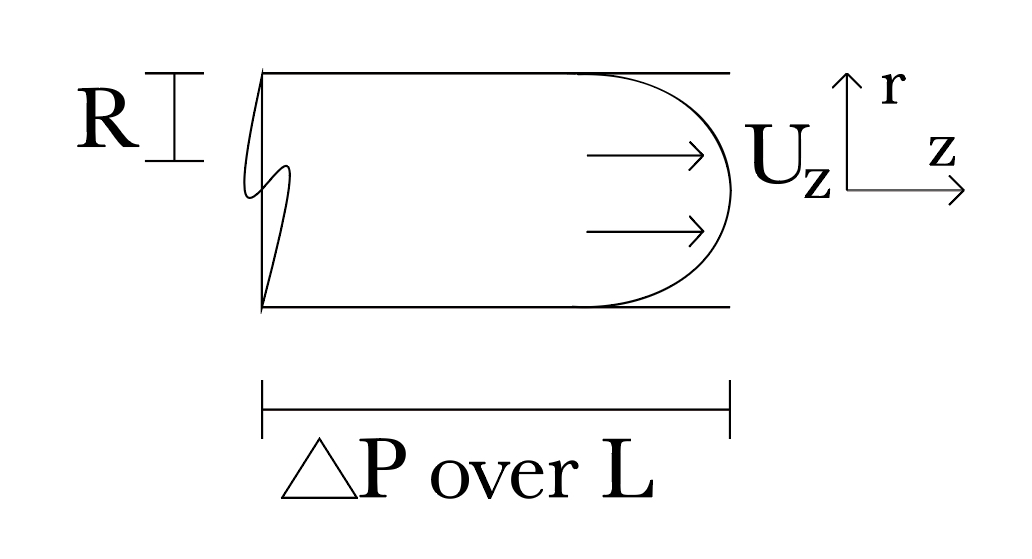7.1. Substitution#
Some second-order ODEs can be solved by making a substitution
Then, you effectively “integrate twice”: once to solve for u, then once more to get y from u.
Example: Kinematics
Newton’s second law is \(F = ma\), where F is the applied force, m is the mass, and a is the acceleration of a body. We also know that acceleration is the derivative of the velocity v, which is itself the first derivative of position x. Hence, Newton’s second-law is a second-order ODE:
Solve for the position of a body x as a function of time t experience a constant gravitational force \(F = -mg\), where g is the acceleration due to gravity.
Substitute the gravitational force and simplify
Make the substitution \(v = \d{x}/\d{t}\), then integrate because the ODE is separable
Replace v and integrate again:
If the initial position is \(x(0) = x_0\) and initial velocity is \(v(0)=x'(0)=v_0\), then
so
This is the classic equation of ballistic motion!
Example: Incompressible flow in a cylinder
Steady, laminar pressure-driven flow in a cylindrical pipe:

is governed by the simplified Navier-Stokes equation:
where \(u_z\) is the velocity along the pipe axis, \(\Delta P\) is the difference between the pressure at the inlet and at the outlet, L is the length of the pipe, and \(\mu\) is the dynamic viscosity.
The pipe walls have no-slip boundary conditions, meaning the velocity is zero there. Derive an expression for \(u_z(r)\).
Make the substitution \(v = r \d{u_z}/\d{r}\), then rearrangeso
Then, substitute for v, separate, and integrate again:
The walls have no-slip boundary conditions so \(u_z(R) = 0\). Additionally, the pipe must have radial symmetry so \(u_z'(0) = 0\). Applying these boundary conditions requires:
The first equation requires \(c_1 = 0\). The second equation then gives
All together,
This is the classic Hagen-Poiseuille flow profile.